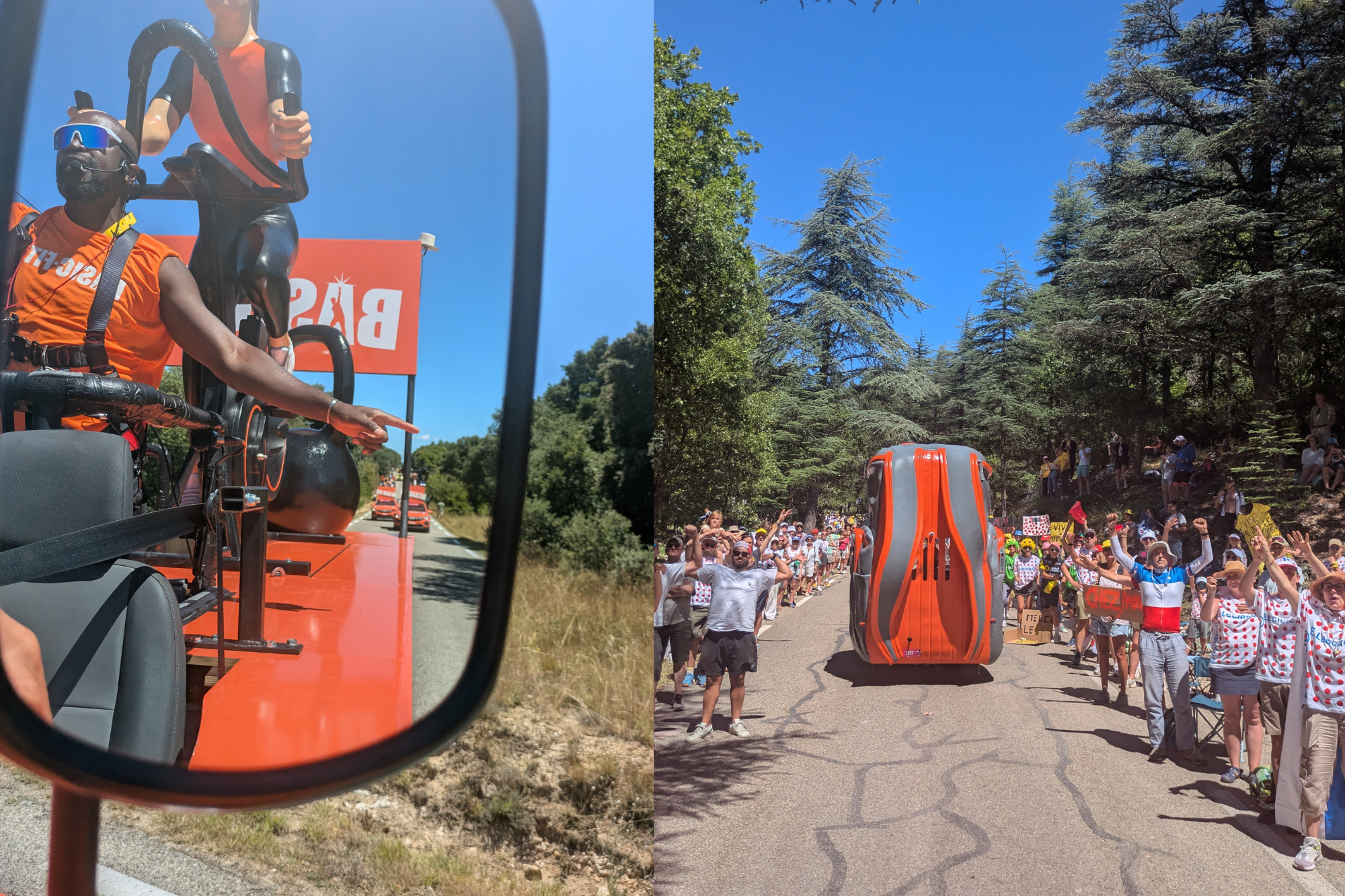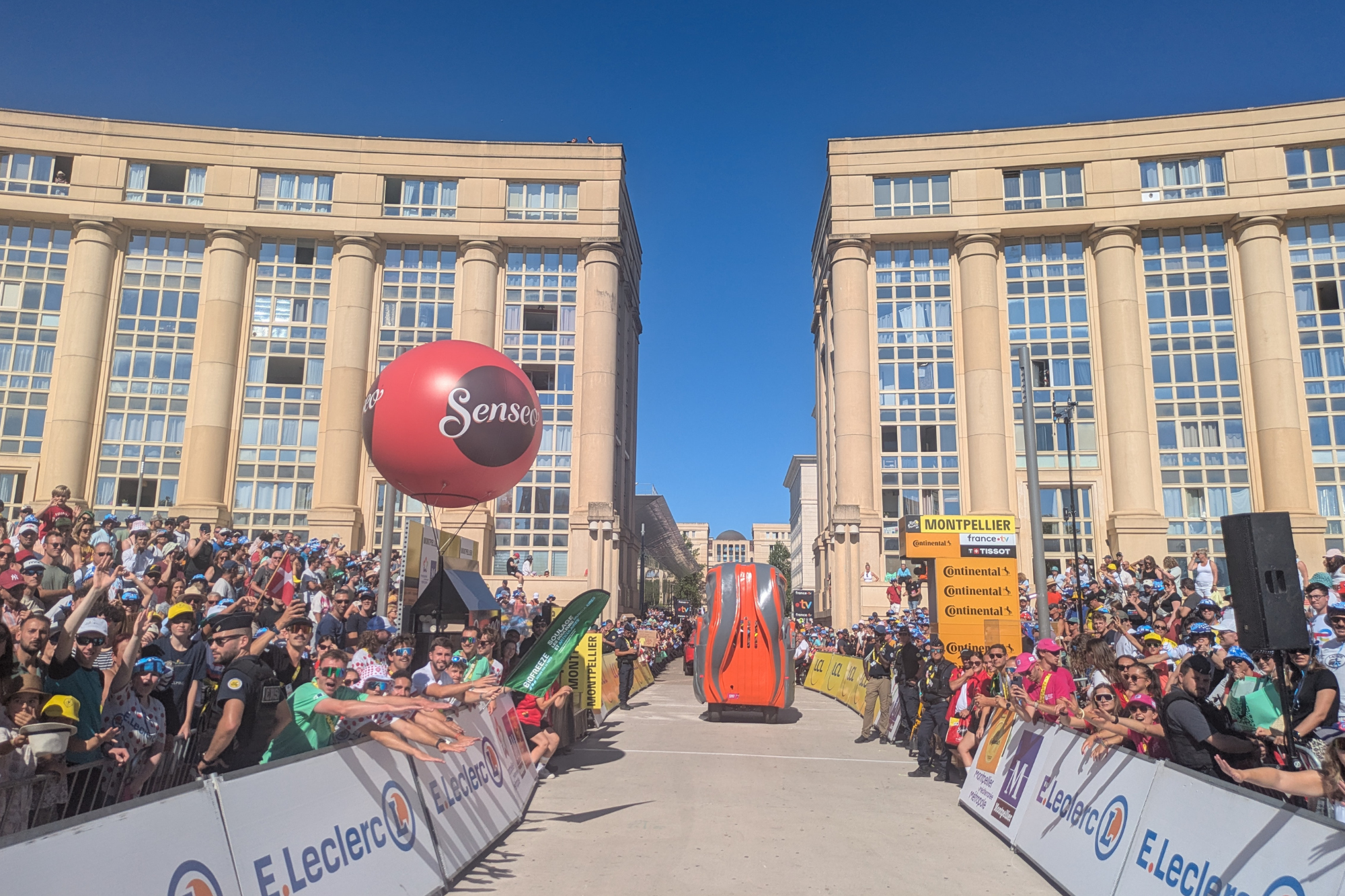There’s an inversion of reality at the side of the road at the Tour de France. The little children – possibly, like their parents, dressed in some form of fancy dress, or caked out in sponsor-branded hats, t-shirts and clutching free tat – look bamboozled and perplexed by events; why is a melon coming towards me at 50 km/h? The older kids, but more to the point, definitely the adults, are fully conscious of the downright ridiculous and bizarre chain of events, and embrace it wildly and uncontrollably, jumping and flailing around, stepping over anyone – pensioners, even their own children – to reach out and grab a keyring, free washing up tablets or items designated for immediate binning such as a promotional flyer. As the Tour de France publicity caravan passes by, ordering people to squat, press-up, bicep curl and dance, hundreds of thousands of people lose their collective minds. And it’s like this, rinsed and repeated, for 21 summer days.
First introduced into the Tour circus in 1930 and now numbering 30 floats of chopped-in-half vans and remodelled cars that include vehicles with cows, sheep and pigs on it, and others with drum sets, beds and guitars on them, la caravane publicitaire is, by some estimates, what brings around half of the race’s spectators out to the roadside. Forget catching a glimpse of Tadej Pogačar and Jonas Vingegaard, people from all cross-sections of society are only here to be silly, daft, and childish.

